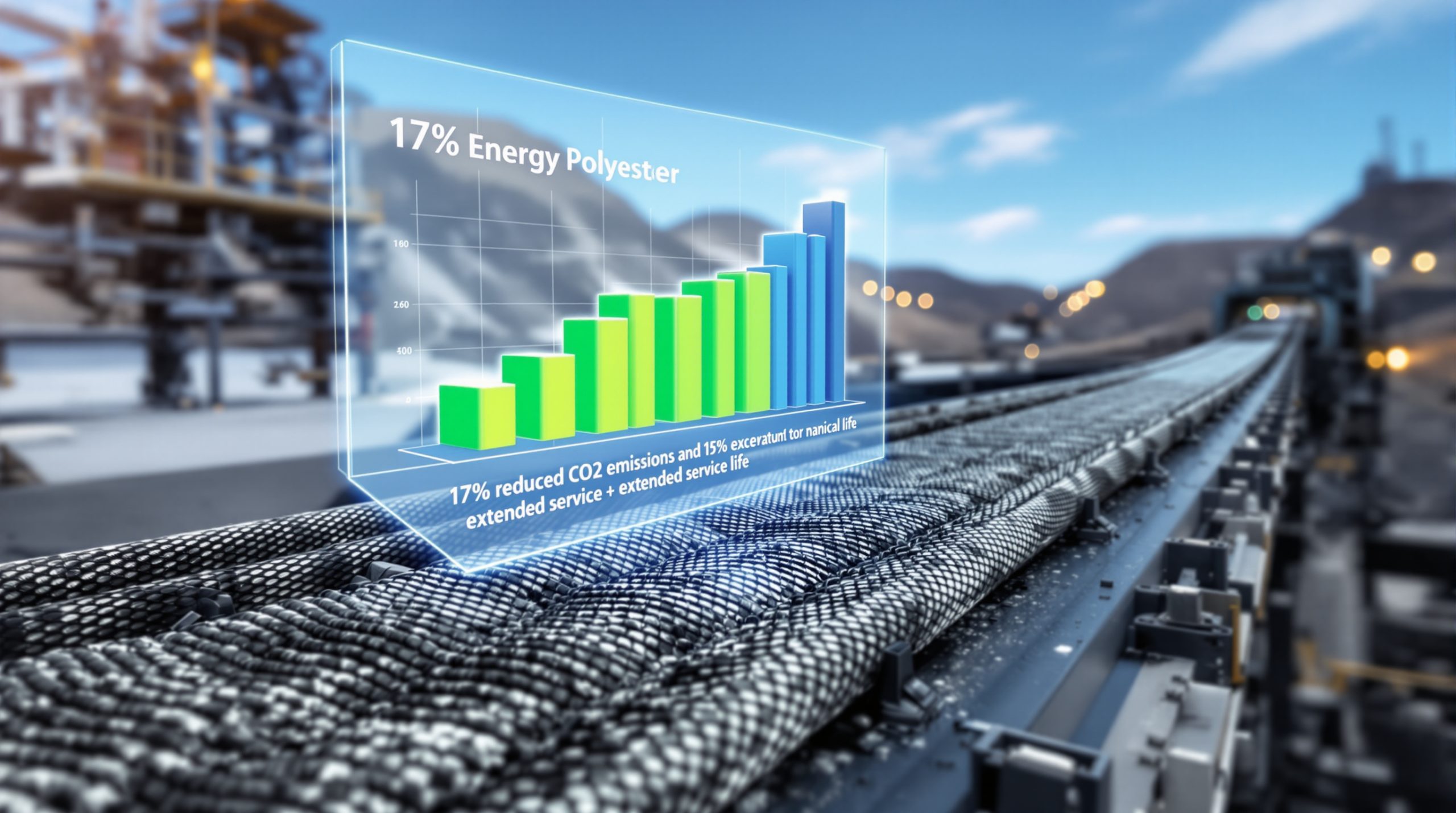Industry Overview: Current State of China's Aluminum Processing Sector
China's aluminum processing sector is currently facing significant headwinds, with operating rates showing a concerning downward trend. As of April 2025, the overall operating rate stands at 61.6%, representing a decline of 0.9 percentage points week-over-week and a more substantial 2.8 percentage points year-over-year, according to data from Shanghai Metals Market (SMM).
This declining trend reflects the combined pressure of traditional seasonal factors and escalating international trade tensions, particularly from recent US tariff implementations that are beginning to reverberate throughout China's aluminum supply chain. The impact of tariffs on aluminum processing operations in China is becoming increasingly evident as export-dependent segments struggle to maintain profitability.
Performance Variations Across Aluminum Processing Segments
The impact of current market conditions varies significantly across different aluminum processing segments, creating a fragmented industry landscape:
Aluminum wire and cable maintains positive momentum with a 64.2% operating rate (up 0.6% week-over-week), buoyed by robust domestic infrastructure investment in power grid projects. Recent tenders for ultra-high voltage (UHV) materials and insulated conductors have provided critical support for this segment.
Aluminum foil operations are running at 71.6% capacity (down 1.4 percentage points), with significant divergence between specialized applications and consumer goods. While battery foil and pharmaceutical applications remain relatively stable, packaging foil (double-zero) and air-conditioner foil are experiencing substantial demand contraction.
Aluminum plate/sheet and strip facilities are operating at 67.6% (down 0.4 percentage points), supported by resilience in automotive and electronics sectors despite broader market uncertainties.
Aluminum extrusion enterprises are functioning at 59% capacity (down 0.5 percentage points), with building materials showing early recovery signs while industrial materials remain sluggish.
Primary aluminum alloy producers are operating at 55% (down 0.4 percentage points), with significant regional variation between northern and eastern production centers.
Secondary aluminum operations are the most severely impacted at 52.5% operating rate (down 3.1 percentage points), suffering from both weak downstream consumption and holiday-related production adjustments.
Tariff Effects: How US Trade Policies Are Reshaping China's Aluminum Industry
Recent US tariff increases are creating profound disruptions throughout China's aluminum export channels, with particularly severe impacts on products destined for American markets. The aluminum alloy wheel hub sector is experiencing the most immediate pressure, with export-oriented businesses reporting significant order cancellations and renegotiations following the implementation of new tariff policies.
"The transmission mechanism from international trade friction to domestic production is becoming increasingly apparent," notes industry analyst Li Wei. "Export-dependent segments are the first to show operational stress, but these effects will gradually permeate the entire supply chain."
Trump's market reshaping is having profound effects on China's aluminum industry, with companies scrambling to adapt to new trade realities.
Full Impact Timeline and Regional Variations
According to SMM analysis, the complete impact of tariff increases on China's aluminum processing sector is expected to become fully apparent by mid-May 2025. This lag exists because many large primary aluminum alloy enterprises are still processing existing orders, creating a buffer between policy implementation and observable production effects.
However, early warning signals are already emerging:
- Inner Mongolia producers report significant operating rate declines and order cancellations
- Shandong province is experiencing a temporary restocking-driven rebound despite broader negative outlook
- Southern production centers maintain more stable operations but have adopted cautious production strategies to mitigate risk
This north-south divergence reflects differences in export exposure, domestic market access, and production cost structures across China's aluminum manufacturing regions.
"Regional disparities in tariff impact transmission are creating both challenges and opportunities. Forward-thinking enterprises are implementing geographic diversification strategies to balance exposure to affected export markets," explains Dr. Zhang Min, metals industry consultant.
Sector-Specific Analysis: Varied Responses to Combined Pressures
Primary Aluminum Alloy Sector
The primary aluminum alloy sector faces particularly complex challenges characterized by:
- Regional performance divergence with northern regions (Inner Mongolia) showing decline while eastern regions (Shandong) experience temporary restocking
- Order collection difficulties reported by major producers supplying wheel hub exporters
- Production rhythm adjustments implemented by forward-thinking enterprises to limit inventory risk
- Raw material procurement caution with stockpiling limited to essential production needs
Industry experts project continued downward pressure on this segment as May progresses, with operating rates potentially declining below 50% in heavily export-dependent regions by mid-month.
Aluminum Plate/Sheet and Strip Segment
The aluminum plate/sheet and strip segment demonstrates relative resilience at 67.6% operating rate, supported by:
- Stable demand from automotive manufacturing (particularly electric vehicle production)
- Consistent orders from electronics and 3C (computers, communication, and consumer electronics) manufacturers
- Early signs of recovery in construction-related applications following supportive real estate policies
However, the segment faces dual pressures from industry overcapacity (estimated at 15-20% above demand) and the uncertain external trade environment. Analysts expect operating rates to fluctuate within a narrow band in the short term, with downside risks increasing if export restrictions impact begins to spread to currently unaffected export categories.
Aluminum Wire and Cable Sector's Outperformance
The aluminum wire and cable sector continues to outperform other segments with 64.2% operating rate growth, driven by:
- Robust power grid infrastructure investment across multiple provinces
- Recent UHV project tenders requiring significant aluminum conductor volumes
- Strong insulated conductor demand for urban power distribution upgrades
- Expectations of additional order placements by late May
This sector demonstrates how targeted domestic infrastructure spending can effectively offset international trade pressures, providing a model for potential policy interventions in other aluminum segments.
However, this outperformance may face headwinds as the sector approaches PV policy transition periods, with some manufacturers reporting cautious order outlooks for photovoltaic-related aluminum components.
Seasonal Factors: How Traditional Cycles Compound Tariff Challenges
The timing of recent tariff implementations has unfortunately coincided with traditional seasonal downturns in China's aluminum processing industry, amplifying their negative impact.
Seasonality's Role in Current Operating Rates
The aluminum processing sector is approaching the end of its traditional peak season, with several compounding factors:
- Labor Day holiday production adjustments reducing effective operating days
- Seasonal end-use demand decline in construction and consumer goods sectors
- Downstream die-casting enterprises implementing holiday production suspensions
- Weak restocking enthusiasm due to consumption uncertainty and inventory risk
This seasonal pattern normally represents a manageable, predictable cycle for producers. However, the addition of tariff-related export disruptions has transformed a routine seasonal adjustment into a more significant operational challenge.
Enterprise Production Schedule Adaptations
Manufacturers across different segments are implementing varied production schedule adaptations:
| Segment | Holiday Schedule Adjustment | Production Strategy |
|---|---|---|
| Building materials | Normal production through holidays | Focused on domestic demand |
| PV extrusion | Cautious scheduling | Awaiting policy clarity |
| Secondary aluminum | 2-3 day partial shutdowns | Minimizing inventory accumulation |
| Aluminum foil | Significant production contraction | Targeting specialized applications |
| Primary alloy | Variable adjustments based on orders | Just-in-time production approach |
These adaptations reflect a sophisticated understanding of both seasonal patterns and tariff impact trajectories, with enterprises implementing tailored approaches based on their specific market exposures.
Market Outlook: Future Trajectory for China's Aluminum Processing
Short-Term Operating Rate Projections
Based on current trends and forward indicators, industry analysts project the following short-term trajectories:
Primary aluminum alloy: Continued downward trend expected, with potential acceleration as export orders decline and existing order backlogs are fulfilled. Northern producers may see operating rates fall below 50% by late May.
Aluminum plate/sheet and strip: Fluctuating trend anticipated, with automotive and electronics demand providing stability while construction applications remain uncertain. Operating rates likely to remain in the 65-70% range.
Aluminum wire and cable: Expected to maintain high but fluctuating rates (62-66%) supported by infrastructure investment, with potential upside if additional power grid tenders are announced.
Aluminum extrusion: Differentiated outlook with building materials showing recovery signs (potentially reaching 60-62% by June) while industrial materials remain sluggish at 55-58%.
Aluminum foil: Downward fluctuation expected as packaging and consumer applications contract, partially offset by specialized segments like battery foil. Overall rates likely to decline to 67-69%.
Secondary aluminum: Slight post-holiday rebound followed by weak decline, with operating rates potentially falling below 50% if export-oriented die-casting demand continues to soften.
Critical Performance Determinants
Several key factors will determine the industry's trajectory in coming months:
- Power grid investment implementation pace – Accelerated project starts could provide significant aluminum demand support
- New PV policy clarification and market reception – Current uncertainty is causing cautious ordering
- Tariff policy transmission effects – Full impact expected by mid-May with potential for additional measures
- Construction sector recovery strength – Early signs of improvement need confirmation through sustained activity
- Domestic consumption pattern shifts – Potential for consumer-driven demand to offset export weakness
- Raw material price dynamics – Aluminum ingot prices will influence processing margins and production decisions
Industry experts are closely monitoring these indicators for early signals of stabilization or further deterioration.
End-Use Market Analysis: Demand Drivers and Challenges
Resilient End-Use Markets
Despite broad challenges, several end-use markets demonstrate continued strength:
Power grid infrastructure continues to drive demand for aluminum wire and cable, with recent UHV project tenders indicating sustained investment. The State Grid Corporation has announced plans for over 30 major transmission projects in 2025, requiring substantial aluminum conductor volumes.
Automotive applications maintain stable demand for aluminum plate/sheet and strip, particularly for electric vehicle components where lightweighting remains a priority. Even with some export market pressure, domestic automotive production provides a reliable demand floor.
Electronics and 3C products show no significant demand reduction, with mobile device and computer manufacturers maintaining production schedules. The aluminum content in these products continues to increase as manufacturers seek lightweight, thermal-efficient materials.
Battery foil and brazing foil applications experience minimal demand changes due to their specialized nature and critical role in growing sectors like energy storage. These high-value segments remain relatively insulated from broader market pressures.
Pharmaceutical and cigarette foil maintain relative stability due to consistent consumer demand patterns and limited export exposure.
Significant Demand Weaknesses
Major demand weaknesses are concentrated in several vulnerable segments:
Aluminum alloy wheel hub exports face severe disruptions from US tariffs, with some manufacturers reporting order reductions of 15-20%. This segment had previously represented a high-growth export category.
Packaging foil (double-zero) shows substantial contraction as consumer goods exports decline and domestic food and beverage producers adopt cautious inventory positions.
Air-conditioner foil experiences significant demand reduction due to both export challenges and domestic inventory adjustments following several seasons of high production.
PV module components face uncertainty during China's current photovoltaic policy transition period, with manufacturers hesitant to place large orders until regulatory clarity emerges.
Secondary aluminum applications struggle with weak end-use consumption across multiple categories, creating a challenging demand environment for recycled material producers.
Strategic Considerations: Navigating the Combined Pressures
Leading Enterprise Adaptation Strategies
Forward-thinking aluminum processing enterprises are implementing several strategic adaptations to navigate the current challenging environment:
- Produce-based-on-demand approaches minimize inventory risk and working capital requirements
- Just-in-time raw material procurement with stockpiling limited to essential production needs
- Production rhythm adjustments based on real-time order flow monitoring
- Regional diversification to balance exposure to differentially affected markets
- End-use market rebalancing toward less affected segments and applications
These strategies represent a shift from the volume-driven growth models that characterized the industry during previous expansion phases toward more sophisticated, market-responsive approaches.
"The most successful enterprises are those that can rapidly adjust production schedules and target specialty products while maintaining cost discipline," notes industry consultant Wang Feng. "Flexibility has become more valuable than scale in the current environment."
Opportunity Identification Amid Challenges
Despite the challenging environment, several opportunity areas remain accessible:
Infrastructure investment-driven demand, particularly in power grid projects, continues to provide reliable volume support. The National Development and Reform Commission's recent approval of seven major UHV projects signals continued commitment to grid modernization.
Building materials recovery shows early promise as real estate market support policies begin taking effect. Policy measures like reduced mortgage rates and developer financing support are gradually improving construction activity metrics.
Regional growth pockets in second and third-tier cities demonstrate stable infrastructure development, creating localized demand centers that can partially offset export weakness.
Specialized product categories like battery foil, brazing foil, and automotive-specific alloys maintain growth trajectories due to their integration with strategic emerging industries.
Domestic market refocusing opportunities exist for previously export-dependent producers willing to adapt product specifications and sales strategies to local requirements.
As geopolitical investor strategies evolve, companies are seeking ways to mitigate political risks while capitalizing on emerging opportunities across the aluminum value chain.
Frequently Asked Questions About Tariff Impacts on China's Aluminum Processing
How Long Will Tariff Effects Continue to Impact China's Aluminum Industry?
The impacts of tariff increases are expected to persist throughout 2025, with full effects becoming increasingly visible from mid-May onward. The duration will depend on several factors:
- Potential policy adjustments from either US or Chinese authorities
- Market adaptations and supply chain restructuring
- Development of alternative export channels to non-tariff markets
- Domestic demand support measures
Industry analysts predict at least 6-8 months of adjustment before new equilibrium patterns emerge, with some export-oriented segments potentially facing permanent structural changes.
Which Aluminum Processing Segments Are Most Vulnerable to Tariffs?
The primary aluminum alloy segment faces the greatest vulnerability, particularly producers supplying the wheel hub export market. These enterprises typically operate with narrow margins and limited product diversification options.
Secondary aluminum producers also show high sensitivity to tariff-related disruptions due to their position in the supply chain and reliance on die-casting export markets that are directly affected by the tariffs.
Certain aluminum foil categories, especially packaging foil, demonstrate significant vulnerability due to both direct export impacts and secondary effects from reduced consumer goods production.
How Do Regional Factors Influence Tariff Impact Severity?
Regional differences significantly affect tariff impact severity due to variations in:
- Export market exposure – Coastal regions typically have higher export dependency
- Production cost structures – Northern regions face higher energy costs but lower labor expenses
- End-market diversification – Some regions have more balanced domestic/export customer bases
- Local policy support – Provincial incentives can partially offset tariff impacts
- Supply chain integration – Regions with complete supply chains demonstrate greater resilience
Northern regions, particularly Inner Mongolia, show earlier and more pronounced effects due to their high concentration of primary aluminum alloy production serving export markets.
Eastern coastal regions benefit from stronger domestic demand that partially offsets export challenges, while central regions show mixed impacts depending on their specific end-market exposure.
What Indicators Should Be Monitored to Track Recovery?
Key indicators to watch include:
- Monthly operating rate trends across all segments (published by SMM and other industry sources)
- Order backlog levels at major producers (visible in quarterly earnings reports)
- Power grid investment implementation rates (tracked through project announcements and tenders)
- New PV policy announcements and their market reception (monitored through industry associations)
- Construction sector activity metrics (real estate starts, completions, and material purchases)
- Regional variations in production and demand (monitored through provincial economic data)
- Aluminum ingot price trends relative to processed product prices (indicating processing margins)
These indicators provide an early warning system for both further deterioration and potential recovery signals.
How Are Domestic Policies Offsetting International Trade Pressures?
Domestic support policies provide partial offsets to international trade pressures through several mechanisms:
- Infrastructure investment acceleration, particularly in power grid and transportation projects
- Real estate market stabilization policies improving construction material demand
- Industrial upgrade incentives supporting advanced manufacturing that utilizes aluminum
- New energy vehicle subsidies maintaining automotive aluminum demand
- Energy-efficiency programs driving demand for aluminum building products
Several companies are exploring innovative approaches like low-carbon aluminium projects to differentiate their products and access premium markets less affected by tariffs.
The Future of China's Aluminum Processing Industry
Despite current challenges, China's aluminum processing industry maintains fundamental strengths including scale advantages, integrated supply chains, and technological capabilities. The sector's adaptation to current tariff and seasonal pressures will likely accelerate several important transitions:
- Shift from volume-driven to value
Looking For An Edge In ASX Mining Investments?
Get ahead of the market with Discovery Alert's proprietary Discovery IQ model, delivering instant notifications on significant ASX mineral discoveries and transforming complex data into actionable insights for your investment strategy. Explore why major mineral discoveries can lead to exceptional returns by visiting Discovery Alert's dedicated discoveries page.




